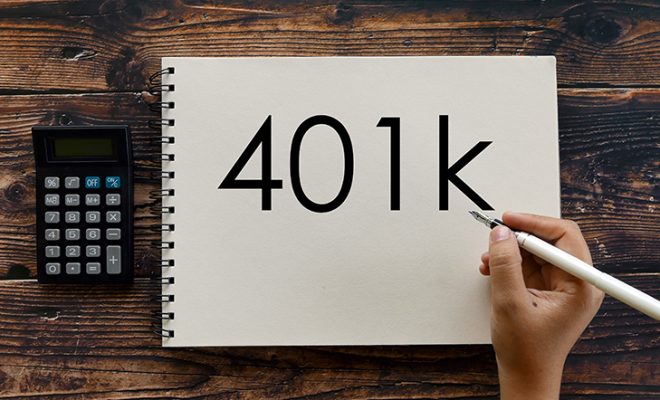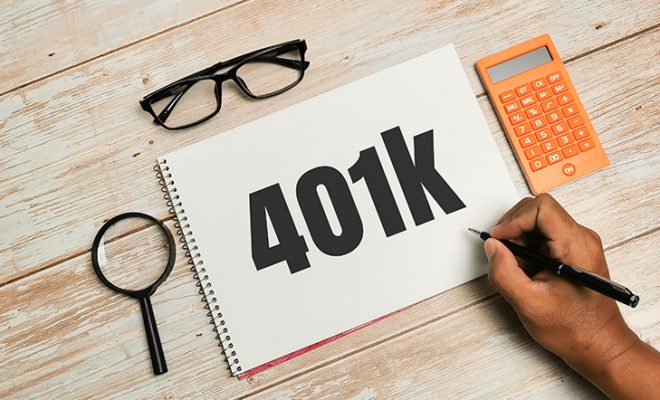The Average 401(k) Balance Based on Your Age

You work hard all your life to effectively save for retirement and build a large retirement corpus. The aim is to ensure that you can retire comfortably. However, to ensure a comfortable retirement, you need to carry out in-depth financial planning, make smart investments, and work on minimizing your tax liabilities. By building a substantial retirement corpus, you can create an additional source of revenue stream through which you can earn interest. It can be challenging to live on Social Security alone, which is why it is highly recommended to have a secondary source of income as well.
A 401(k) retirement account is one of the most popular and trusted investment vehicles to plan your retirement in the United States. A 401(k) is a tax-deferred retirement savings plan offered by your employer that allows you to save for retirement. You can invest in 401(k) retirement plans to build a large retirement nest egg, enough to fulfill your needs.
A 401(k) retirement account offers significant tax benefits.If you start investing in the plan from a young age, you can build a sizable corpus for your golden years. If you need guidance on how to open a 401(k) plan, its benefits, contribution limits, tax implications and more, consult with a professional financial advisor. It may be difficult to assess how much you need for your retirement, but identifying how others are planning—or not—can offer a benchmark for setting future financial goals and milestones. For 2022, you can contribute up to $20,500 in traditional 401(k), $1000 more than the previous year. You could be losing money if your workplace offers a 401(k) plan and you don’t participate, especially if your employer matches your contributions. Additionally, while a 401(k) is one of the most popular retirement savings alternatives for many people, only 40% of workers contribute to one, according to the US Census Bureau.
Below you will find average 401(k) balances based on one’s age and the income level that you should ideally have at different stages of your life:
The average 401(k) balance by age
According to a recent study, the average 401(k) balance in 2020 was $129,157, up from $106,478 in 2019. Additionally, the age group was also found to have a significant impact on averages.
1. 25 years old and under
$6,720 is the average 401(k) balance for 25 years old and below. The median 401(k) balance is $2,250.
The average 401(k) balance at the age of 22-24 is rather good, indicating that young people are serious about saving for retirement. If you’re in your early 20s and do not have debt and other obligations, you may try to put as much money into your 401(k) as possible. It’s best to get started as soon as possible. The compounding effect, if utilized to its maximum, will help secure a comfortable retirement corpus.
If you’re falling behind on your contributions, try increasing them by a few percentage points while you’re still in your thirties. This is made further easier if you time the rise with any other raises or bonuses you may receive. You won’t have to worry about running out of money this way. In fact, living within your means rather than above it will help you keep your expenses under control.
2. Age 25-34
The average 401(k) balance for this age range is $88,142. The median balance stands at $40,714.
This is the time to make sure you’re aggressively contributing to your 401(k). You may be paying off student or home loans, or some other debt this stage in your life. However, letting your 401(k) suffer because of the same may not be wise. This is a critical time for your retirement corpus.
3. At age 35-44
The average 401(k) balance calculated for this age group is around $224,411. The median balance comes at $106,271.
If you haven’t already started maxing out your 401(k) by this age, think about what changes you can do to come as near as possible to that $20,000 per year contribution. You don’t want to miss out on years of interest and the effects of compounding!
You may have several financial obligations in your 35-40 life period. Nonetheless, it’s critical to contribute a significant amount of your income to your 401(k) to ensure that your senior years are not squandered. Make the most of your financial options while you still have about 20 years until the traditional retirement age.
4. At age 45-54
The average 401(k) balance for this age group came down at $436,528. The median balance was calculated as around $204,900.
You can begin contributing extra to your retirement account once you reach the age of 50. This additional contribution is known as a catch-up contribution. So, ensure that you maximize your contribution limit and make up for any shortfall in savings.
You can also contribute the maximum amount to a regular or Roth IRA. You should have accumulated a multiple of 6X by the age of 50 (on account of your income). Surprisingly, half of the individuals in the 45-54 age group are not even close to achieving that goal. It is a good idea to increase your savings rate as retirement is just around the corner.
5. At age 55-64
The average 401(k) balance at 55-64 Years of age is $586,486. The median 401(k) balance at this age is 5$270,698.
By the time you’re in your late 50s or early 60s, you should have a better notion of what retirement might entail for you and what it means to be “retired.” Do you want to work as long as you possibly can? Would you prefer to take it easy? What are your Social Security benefits, and when is the best time to collect them? Are spousal or survivor benefits available to you? It is good to have a clear answer to the above questions as it will help you effectively plan for your retirement.
Those approaching or in retirement should diversify their portfolios beyond stocks, such as bonds and cash instruments, which can stabilize a portfolio during turbulent times. For those in the 55-64 age bracket, it would be critical to know how much they have saved in their retirement fund and how near or far they are to reaching their goal. Do you have ten times your annual wage in your savings account? Is your retirement fund ready? and more.
The average 401(k) balance hides the fact that many people have saved significantly more than $232,379 in their retirement accounts. Unfortunately, the median balance shows that many people have saved significantly less.
6. 60-69 years old
$195,500 is the average 401(k) balance for individuals in the age bracket 60-69. The median 401(k) amount is calculated as $62,000.
This group’s growth usually is slow, owing to the fact that the latter half of this group may be drawing down their 401(k) balances in order to start spending the money they’ve saved. As a result, 401(k) balances begin to decline.For individuals aged 70 and up, the average balance is $182,100, with a median of $51,900. 401(k) distributions can begin as early as age 59 1/2.
However, many people don’t retire until later. According to Gallup, Americans’ average stated retirement age is 61, and the full retirement age for those in this group is 67. Choosing your distribution age and amount can be a critical factor in determining the success of your retirement plan..
Savings potential in a 401(k) plan by age
The above numbers give a rough estimate of 401(k) savings potential by age based on calculated assumptions. Many people may find these figures to be excessive, especially if they are older or they started late. It can still be used as a reference for overall retirement savings, including IRAs, Roth IRAs, and after-tax savings. Although it is intended for a single person, it can also be used as a guide for a married couple if one spouse decides to retire.
SPONSORED WISERADVISOR
Things you can do right now to improve your retirement preparedness
Retirement planning is a multi-step, time-consuming process. You’ll need to develop a foolproof financial plan to fund a comfortable, secure retirement.
The first step in retirement planning is thinking about your retirement goals and how long you have to achieve them.You must consider the different kinds of retirement accounts available to you for securing your future. Investing the money you save is critical for ensuring you have enough money saved for retirement.
Needless to say, many people are saving far less than they could. The good news is that it is not too late to change things.
1. Be consistent with saving and stay on track for your objectives
If you’re already saving, keep doing so, whether for retirement or another goal. Be aware that saving money is a good habit to have. If you haven’t already, it’s never too late to start saving. If necessary, start small and gradually increase your monthly savings. The earlier you start saving, the more time you have for your money to grow and harness the power of compounding. Make a plan, stick to it, and set objectives for yourself. It’s crucial to remember that it’s never too early or too late to start saving.
2. Avoid withdrawing your retirement funds
If you withdraw your retirement funds now, you may not only lose your principal and interest, but you may also end up forfeiting tax benefits or be subject to withdrawal penalties. Keep your retirement money in your current plan or move them to an IRA or your new employer’s plan if you shift jobs.
3. Contribute to your employer’s retirement plan
Sign up for a retirement savings plan offered by your employer and contribute as much as you can. Doing so will help you lower your taxes, and you can also benefit from having your employer match your contribution.
4. Study the fundamentals of investing
It’s possible that how you save is just as significant as how much you save. Inflation and the type of investments you make have a big impact on how much money you’ll have saved when you retire.
Understand how your retirement or savings account is invested. Ask questions about the investment alternatives available in your plan. Put your money into a variety of investments. You are more likely to reduce risk and increase return by diversifying your portfolio. Your investment mix may shift over time due to various factors, including your age, goals, and financial situation.
5. Utilize the resources available to you to the fullest
There are several tools available to help you better understand your finances, and failing to use these tools could leave you with a big financial blind spot. Use tools such as the retirement expenses calculator to figure out if you’re on track for your retirement goals and how much you will need to save to fund your retirement lifestyle. If you have the opportunity to engage with a financial planner, take advantage of it, especially as you get closer to retirement. A financial advisor looking out for your best interests can help you strategize and fill in any gaps in your retirement income and savings goals.
To conclude
Understanding where you spend, save, and how much your lifestyle costs are critical to achieving your total retirement planning goals. If the notion of saving for retirement has you feeling overwhelmed, taking stock of your financial situation is the first step toward getting a handle on your retirement planning. Start by investing in 401(k) and work on investing your funds to create a substantial retirement corpus.
Use the free advisor match tool to match with an experienced and certified financial advisor that can help you effectively plan your 401(k) around your retirement goals and needs. Give us basic details about yourself, and the match service will connect you with 1-3 professional financial fiduciaries that may be suited to help you.











